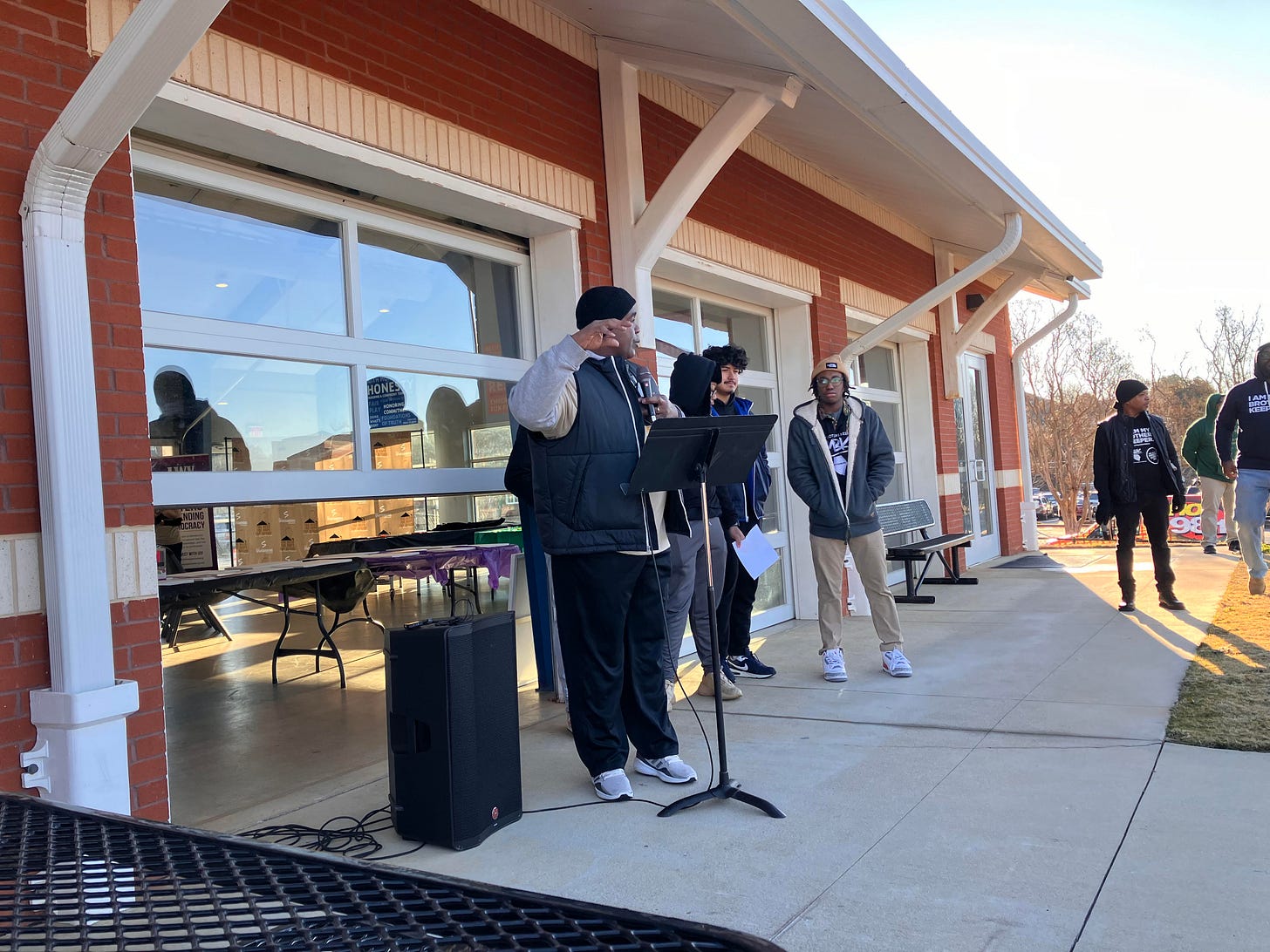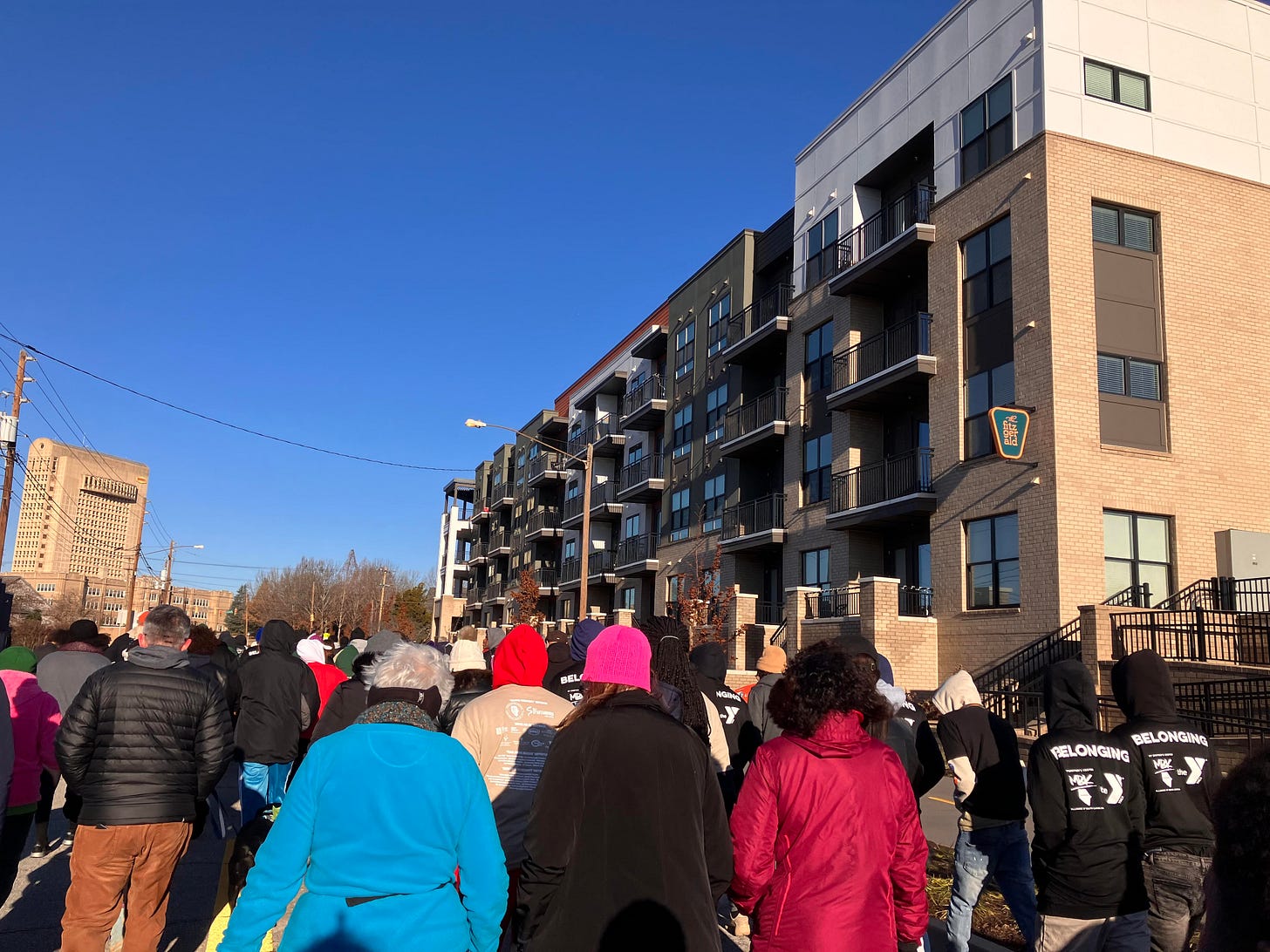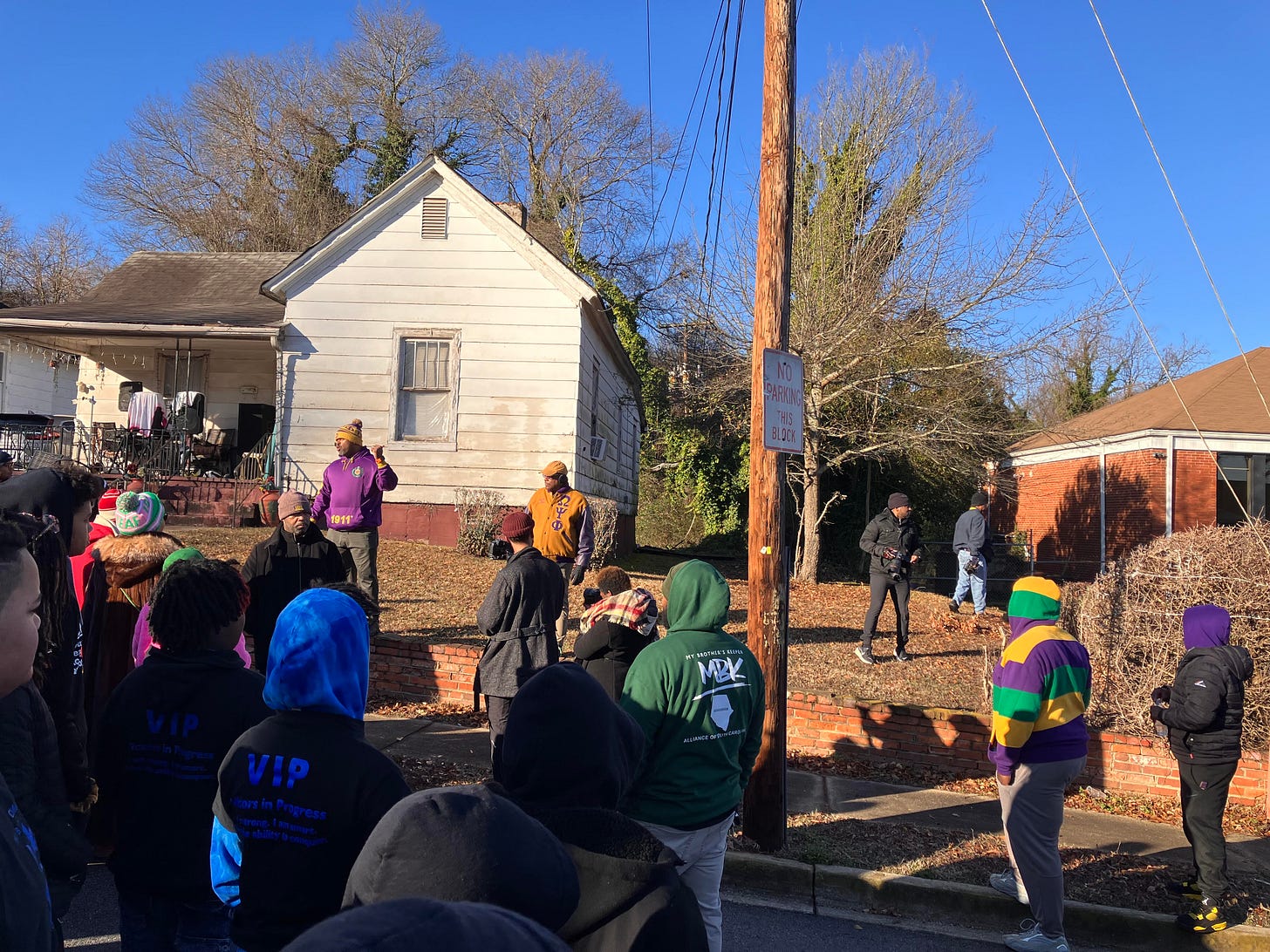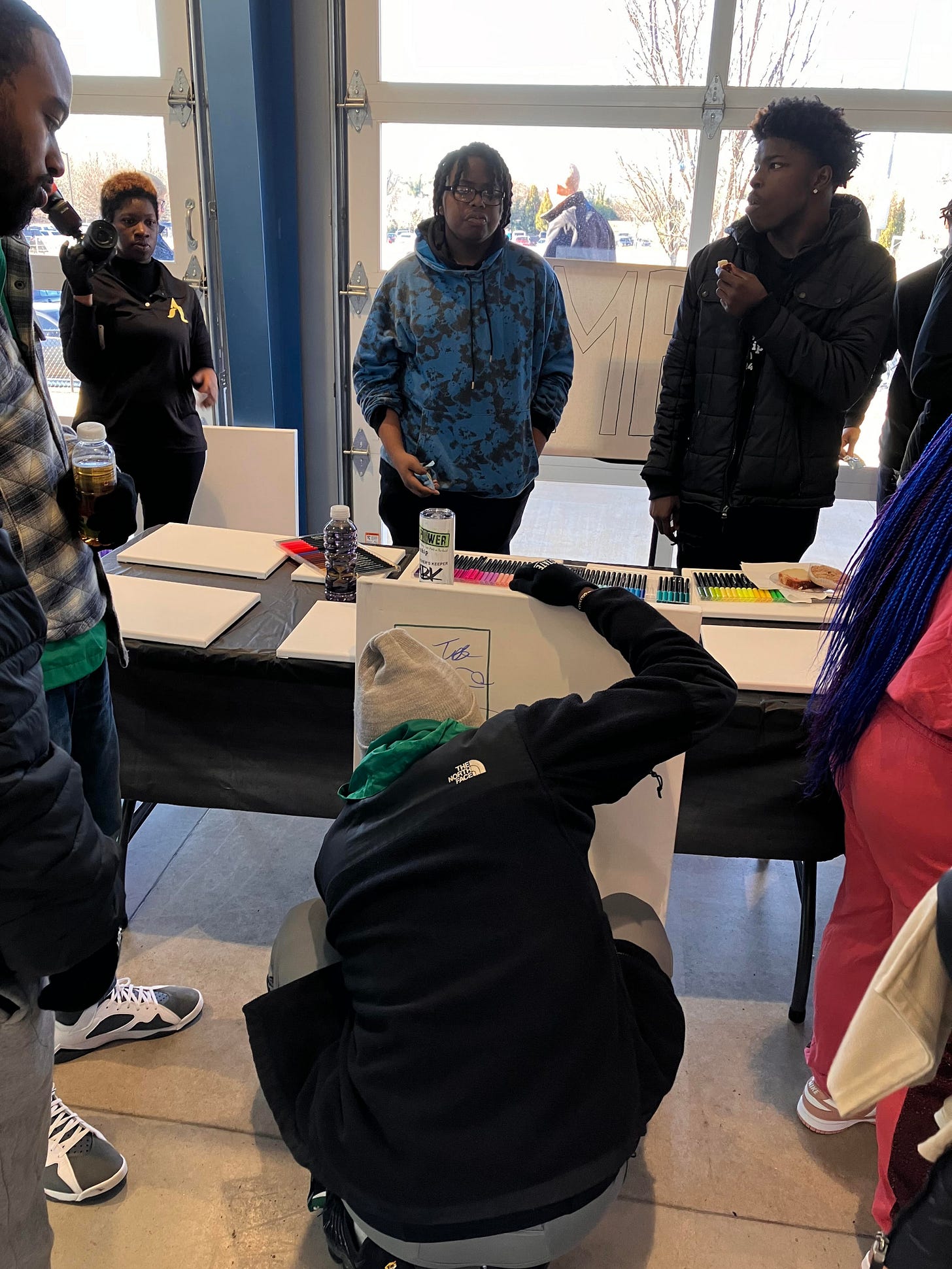My Experience Attending Spartanburg's MLK Walk As One
And the many ways in which walking can build community
On the morning of January 13th, I left Converse to embark on the day’s walkable adventure. As I walked from Converse University to the YMCA of Greater Spartanburg, I did worry about turnout for the Walk As One solely due to the windy and chilly conditions. Luckily, when I got to the YMCA I was greeted by a huge crowd of my fellow Spartanburgers. I could feel the excitement around me as we all talked to one another and waited for the walk to get underway.
Within this piece I aim to do two things — one, relay to y’all the experience I had participating in this annual Spartanburg event and two, flesh out a few of the reasons why I feel that walking is such an important tool when it comes to building community. If you are someone who participated in this walk, I hope you find this piece validating. If you were not out there this year, I hope this piece inspires you to make sure you are right there walking with us in 2025.
Walking As One
Spartanburg’s MLK Walk As One is just one of the many events that comprise MLK Unity Week here in Spartanburg. The week also includes a community celebration and a day of service on MLK day itself, in which a myriad of service projects across Spartanburg take place. The Walk As One’s expressed goal is to allow members of the Spartanburg community to walk alongside each other and explore the city as one unit. Participants are encouraged to talk to the other folks in attendance, especially if they are someone they do not already know.
Our walk began outside of the YMCA. I would try to give an estimate of attendance, but I ain’t all that great with numbers, so I will say that there were well over a hundred folks out there and leave it at that. The event began with opening remarks from several people, including Mayor Jerome Rice. Several local groups were in attendance, including Spartanburg High School’s Black History Club and My Brother’s Keeper Spartanburg.
Walking As Solidarity & Safety
Our group then left the YMCA and began our journey. We walked down Union Street in front of the Fitzgerald. The thing that struck me about walking as one was how much safer it felt. In last week’s blog post I talked about the danger of being a lone pedestrian in a place built primarily for cars and not people. For the MLK Walk As One, we were moving as one unit through the city.
This inherent safety created by walking or biking as a group is one that is popular all over. In many communities, parents have formed bike buses so they can bike with their kids to school. The bike bus movement primarily started due to how dangerous streets around schools tend to be. This also breaks down the class divide that can exist based on how kids commute to school. As a kid, me being a bus rider came with a particular social stigma. Giving kids the ability to walk or bike to school as one big group is both safe and allows for more community building among them regardless of class.
Circling back around to the Walk As One specifically, I enjoyed walking through parts of town that I have walked before as a lone pedestrian. I got to experience how certain corridors would feel if they were a safer walk; if I did not have to dodge cars turning on red or stopping in the middle of the crosswalk. This is why I highly suggest walking with friends if you choose to walk more due to this blog. While I enjoying walking as a solitary activity, it can also be an act of solidarity with one another. Walking with other people can make the experience even better for everyone involved!
Walking As Remembrance
One of the most important parts of this year’s walk, in my opinion, was when we stopped at 312 N. Dean Street. Mayor Jerome Rice stopped the walk on this corner and called some folks to come and explain to us the significance of this place we were now at.
312 N. Dean Street is the site of one of Spartanburg’s first schools, and one of the first buildings constructed specifically for black people. The Dean Street School, later renamed the Alexander School, was the result of several black churches consolidating so that they could more effectively educate their youth. The school was built in the 1890s and continued to hold classes until integration in the 1960s.
I had never explored this particular street, and even if I had, I do not think I would have known its significance if we had not stopped to showcase it. I did not see a historical marker or anything of that sort on the site. Through this communal walk, we were able to hear this place’s story and learn how important it is to the black community of Spartanburg. As I do my own walks, I aim to continue to think about the places that I walk through and the history that exists in those places.
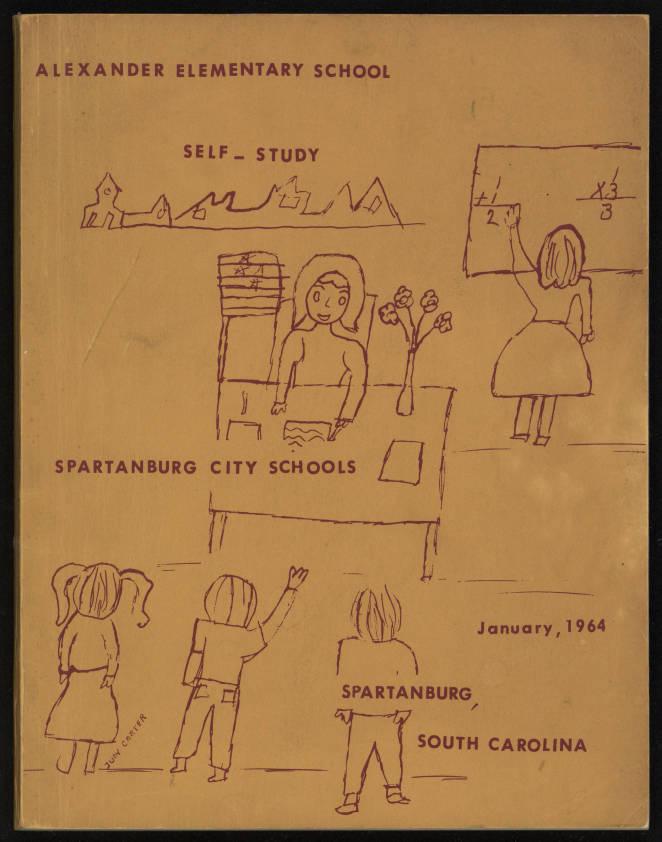
Walking As Community Building
I do think that this is tied to the first point about solidarity, but community is the end goal of all of this so they are inherently intertwined. I loved this walk because I talked to a few folks, some of whom I knew and some of whom I did not. I also got to overhear conversations excited about the baseball stadium and upcoming trail expansions. I talked for a few minutes to a guy who was a Spartanburg Walk As One seasoned veteran. I talked to a teenager with a My Brother’s Keeper-themed title belt draped over his shoulder.
While these sound like simple acts, I do not want you to underestimate how important they can be. The second piece posted to this blog is literally titled ‘don’t let your neighbors be strangers.’ These small interactions are important as they are the building blocks of a vibrant community. Community does not always look like a big rally or party, it can be as simple as stopping mid-walk just to talk to someone. Community is not defined by the big events that we put on, but the things that happen between those big events.
The walk ended back at YMCA, where we grabbed refreshments and got the opportunity to sign our names onto MLK signs and make several different crafts. I hung around for a bit until I headed off towards my next adventure.
What comes next
One of the quotes from Martin Luther King Jr. that inspired this week of unity states that “[o]ur goal is to create a beloved community and this will will require a qualitative change in our souls as well as a quantitative change in our lives.”
The community building should not begin and end at this annual walk. The feeling of unity within Spartanburg should not evaporate the second this week of unity is over. We should continue to walk our community so that we can truly understand the place we call home. We should walk neighborhoods that are not our own so that we can say hello to folks and understand that they are a piece of our wider community. We need to have that qualitative change in our souls that demands that we look around and find ways in our community that we can bring about quantitative change.
As you walk, bring a bag to pick up litter. Hold a door open for somebody. Bring a book to put in a little free library. Say hello to someone and smile real wide. Thank your barista. Thank your bus driver. Thank the person that held the door open for you.
And watch these small acts pile up ‘till you cannot help but love where you live.
Until next time,
Liv.





